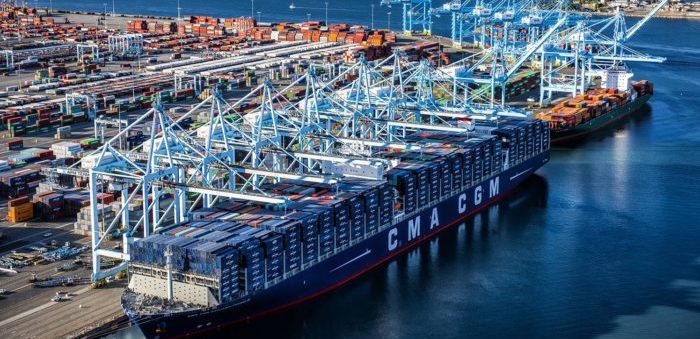The Port of Los Angeles surpassed its 2020 goal for reducing the health risk of emissions from port-related activity, according to the Port’s 2016 Inventory of Air Emissions. The annual report also shows that the port achieved record clean air gains while moving more cargo than ever.
Highlights
- From 2015 to 2016 alone, pollution is down 13 percent for DPM, 10 percent for NOx and 14 percent for SOx.
- For every 10,000 TEUs handled at the Port complex, DPM emissions are down 89 percent, NOx is down 63 percent, and SOx is down 98 percent. Greenhouse gas emissions are also at their lowest – down 28 percent – for every 10,000 TEUs.
“These outstanding results are a powerful demonstration of how we can continue making our air cleaner even as we move record amounts of cargo at the Port — and I’ll keep pushing for continued progress toward the goal of zero emissions goods movement at the ports,” said Los Angeles Mayor Eric Garcetti.
Specifically, 2016 marked the port’s highest reduction of all key pollutants. Since the port’s baseline inventory in 2005, diesel particulate matter (DPM) emissions have fallen 87 percent, sulfur oxides (SOx) emissions have plummeted 98 percent, and nitrogen oxide (NOx) emissions have dropped 57 percent.
During the same period, the port moved more than 8.85 million twenty-foot equivalent units (TEUs), maintaining its ranking as the Western Hemisphere’s No. 1 container seaport and surpassing the Port’s earlier record of nearly 8.47 million TEUs set in 2006.
DPM emissions are also used to assess health risk. The Port met its 2020 goal in 2014, when it lowered DPM emissions 85 percent. With an 87 percent reduction in health risk in 2016, the Port continues to exceed its 2020 goal.
Substantial progress in reducing emissions from ships played a key role in the 2016 results. Factors include the ongoing trend of fewer vessel calls due to bigger ships carrying more cargo, fleet compliance with California’s shore power regulations for an entire year without congestion, and an increased use of alternative emissions capture technology when plugging into shore-side electricity is unavailable.
Increased compliance with cleaner vessel fuel regulations, continued participation in the Port’s Vessel Speed Reduction Program, and growing participation in the Port’s voluntary Environmental Ship Index program also led to clean air progress.
Going forward, the Port is pursuing new clean air measures, as it is working with its industry partners to implement near-zero and zero tailpipe emissions strategies. These include expanding demonstration projects to test zero emissions drayage trucks and launching new projects to test near-zero and zero emission yard tractors and zero emissions top handlers for which the Port has secured funding from the California Air Resources Board and the California Energy Commission.
Explore more in the Port’s 2016 Inventory of Air Emissions:
































































